


South Korea: Healthcare Workforce Education and Training
Medical graduates per 100,000 population, 2021: 7.3 Nursing graduates per 100,000 population, 2021: 105.2
Source: OECD (2023), Health at a Glance 2023: OECD Indicators , OECD Publishing, Paris, doi.org/10.1787/7a7afb35-en.
Tuition Fee Per Semester in USD for a Graduate Degree in Medicines: $2,510-$10,960.
Source: Tuition Fees in Korea. Study In Korea, Run By Korean Government. From the web at https://www.studyinkorea.go.kr/en/overseas_info/allnew_tuitionFees.do , last accessed Sept. 14, 2022.
Graduate Tuition Fee Per Semester, Professional Graduate School of Medicine, Seoul National University (2015): 5,340,000 Korean Won ($3,828.81 USD at rate of 0.0007 RKW per USD accessed Sept. 14, 2022 ).
Source: Seoul National University. Academic Resources: Registration . Last accessed Sept. 14, 2022.
“There are 40 medical colleges or schools in the Republic of Korea. Medical students have to fulfill four years of medical education on top of either a two-year premedical course or a four-year bachelor’s degree. The quality of medical education is assured by the Korean Institute of Medical Education and Evaluation (KIMEE). After obtaining a license to practice as a doctor, almost all new doctors start further training to be a medical specialist. To apply for the qualification test for medical specialists, a one-year internship and four-year residency in a specialty (three years for family doctors) are required. “The hospitals or institutes for further medical training are designated by the Minister of Health and Welfare. Following recent advancements in medical knowledge, many associations of specialist doctors offer certifications of subspecialties to qualified specialists. The certification of subspecialty is valid for five years and subject to revalidation to ensure medical competency.”
Source: World Health Organization. Regional Office for the Western Pacific. (2015). Republic of Korea health system review . Manila: WHO Regional Office for the Western Pacific.
“To become a nurse, nursing students have to fulfill either three or four yours of nursing education. Recently, some nursing departments that once provided three-year nursing education have upgraded themselves to provide four-year nursing education. The quality of nursing education is assessed by the Korean Accreditation Board of Nursing Education (KABONE). “KABONE also designates and evaluates educational institutes for nursing specialists and manages their qualification test. Nurses who have practice experience of at least three years and who have completed a designated education programme for nursing specialists are eligible for the test. The nursing specialist system was first introduced in 2002 with specialties in anaesthetic, public health, home health-care and mental health nursing. Seven specialties including infection control, hospice, and oncology nursing were added to the first batch of nursing specializations in 2006. As of 2012, about 12,800 nurses were qualified as nursing specialists in 13 specialties.”
South Korean Health System Overview Health System Rankings Health System Outcomes Coverage and Costs for Consumers Health System Financing and Expenditures Preventive Healthcare
Healthcare Workers Health System Resources and Utilization Long-Term Care Healthcare Workforce Education and Training Health Information and Communications Technologies Pharmaceuticals
Political System Economic System Population Demographics People With Disabilities Aging Social Determinants and Health Equity History, Reforms, and Challenges
World Health Systems Facts is a project of the Real Reporting Foundation . We provide reliable statistics and other data from authoritative sources regarding health systems and policies in the US and sixteen other nations.
Page last updated September 4, 2024 by Doug McVay, Editor.
We value your privacy
Privacy overview.
- Medical Library

SNU MEDICINE

- Vision & Mission
- Message from the Dean
- International Partners
- Organization
- Basic Medical Science
- Clinical Science
- Information
- Introduction
- Undergraduate

- Undergraduate Curriculum
- Graduate Curriculum
Research of the Month
- Research Units
- Visiting Student Elective Program
- Campus Housing
- Electives Schedule
- Subject Areas
- The 10th Anniversity of SNU Medicine OIA

Select Translation Language
- Luxembourgish
- Myanmar (Burmese)
- Scots Gaelic
- Haitian Creole
- Azerbaijani
- Chinese (Simplified)
- Chinese (Traditional)
- Kurdish (Kurmanji)
Reaching Beyond Korea to
Become the Leading Medical School in the World
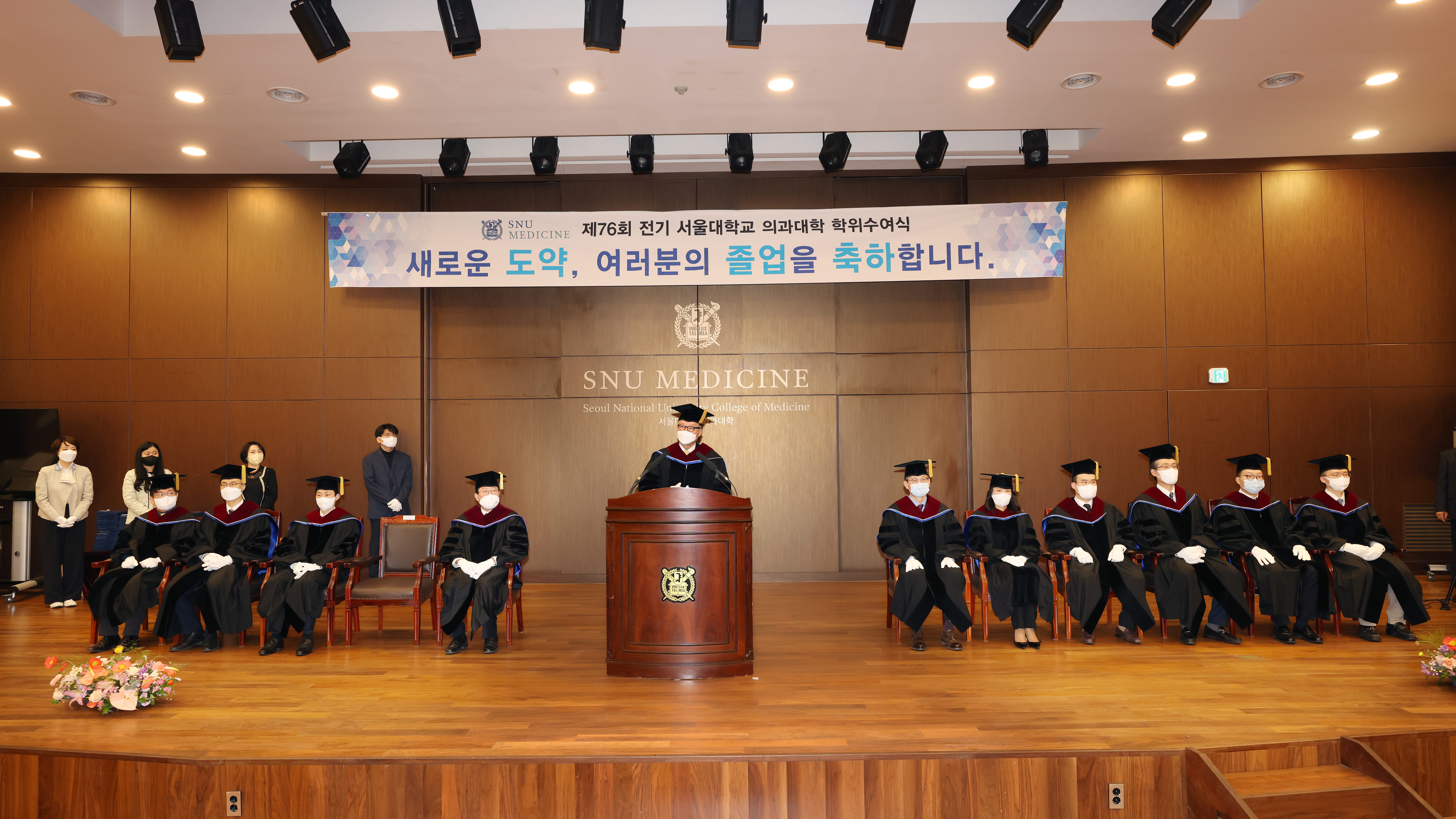
The 76th graduation ceremony of Seoul National University College of Medicine
_1640670234709.jpg)
2022 SNUCM OT and Parents' Day
GSDS-SNUCM Agreement Ceremony on Bachelor's & Master's degree joint course
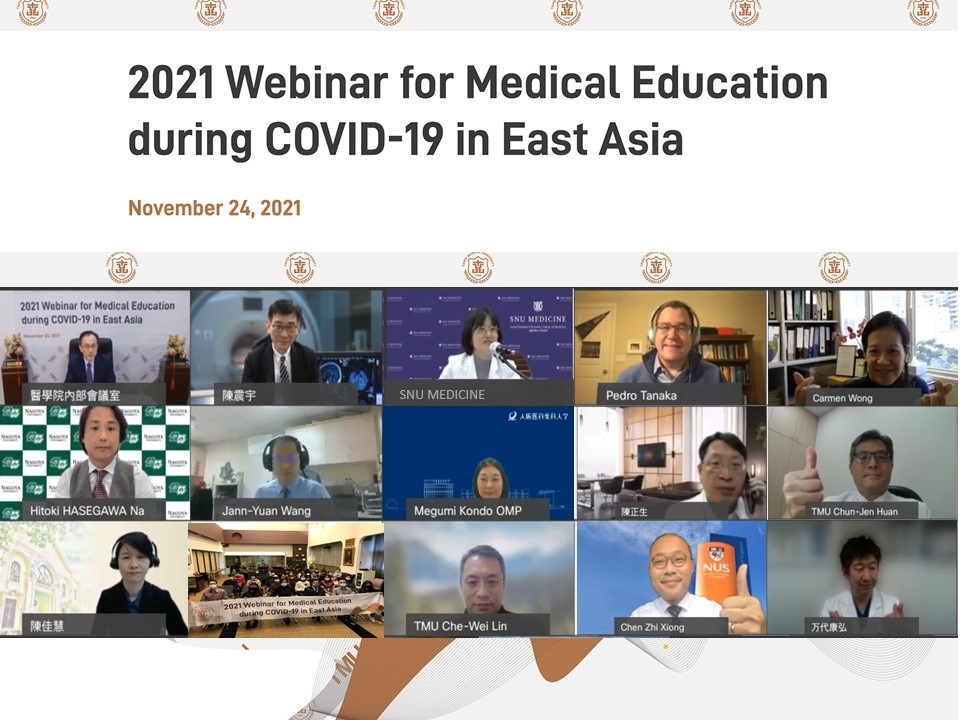
2021 Webinar for Medical Education during Covid-19 in East Asia
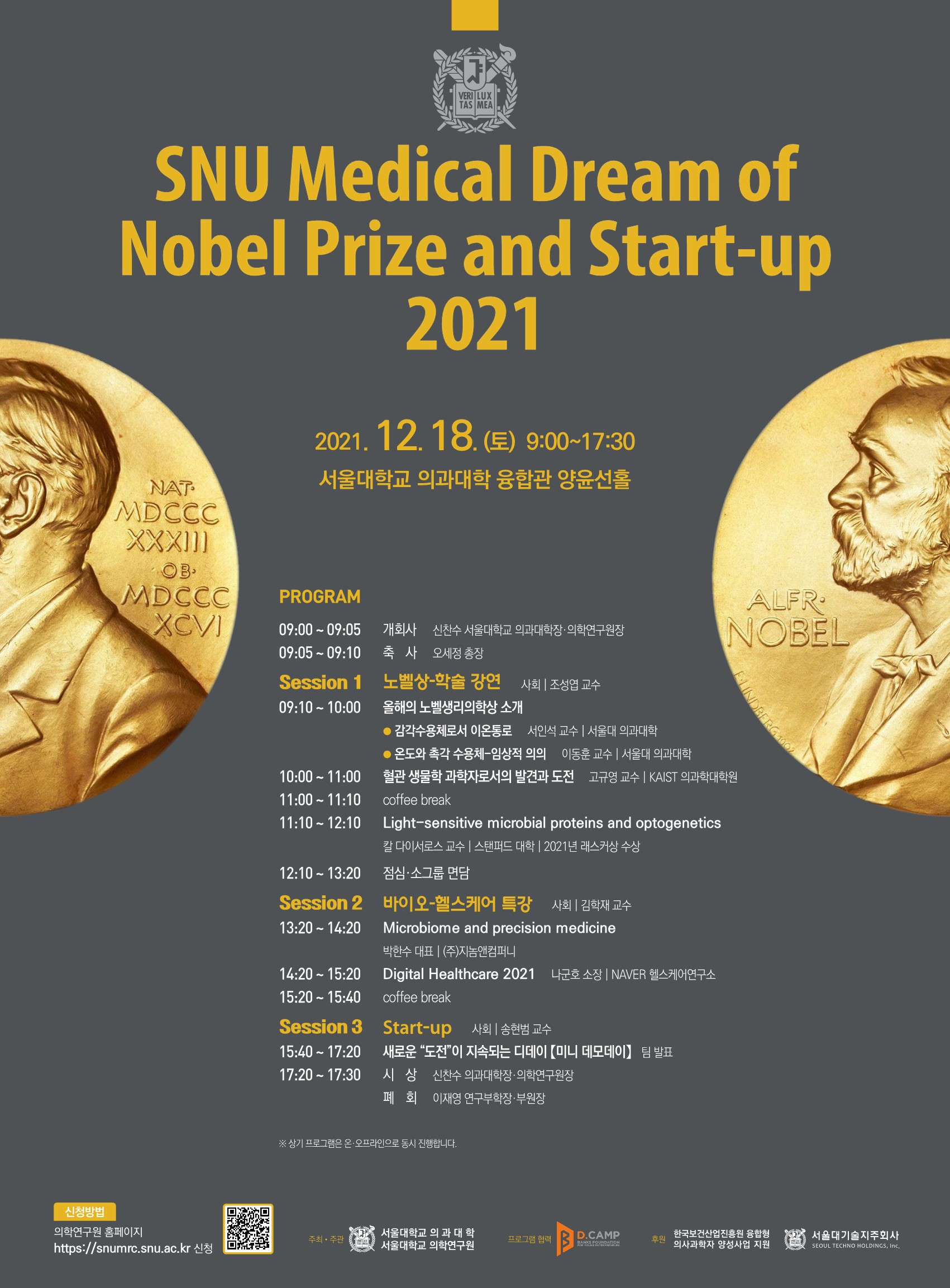
SNU Medical Dream of Nobel Prize and Start-up 2021
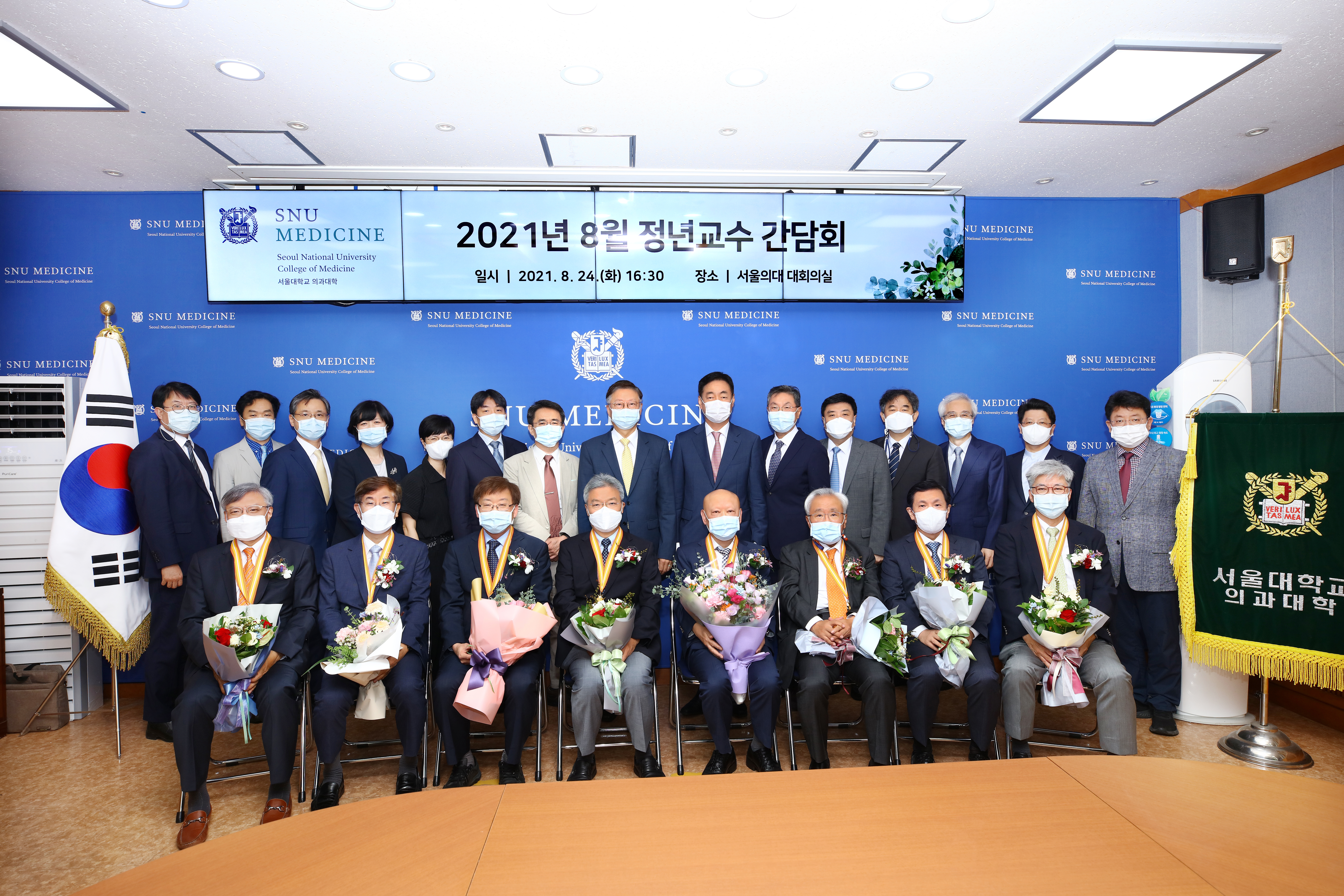
SNUCM Professors Retirement Ceremony in August 2021

2021 SNUCM-SNUH Seminar
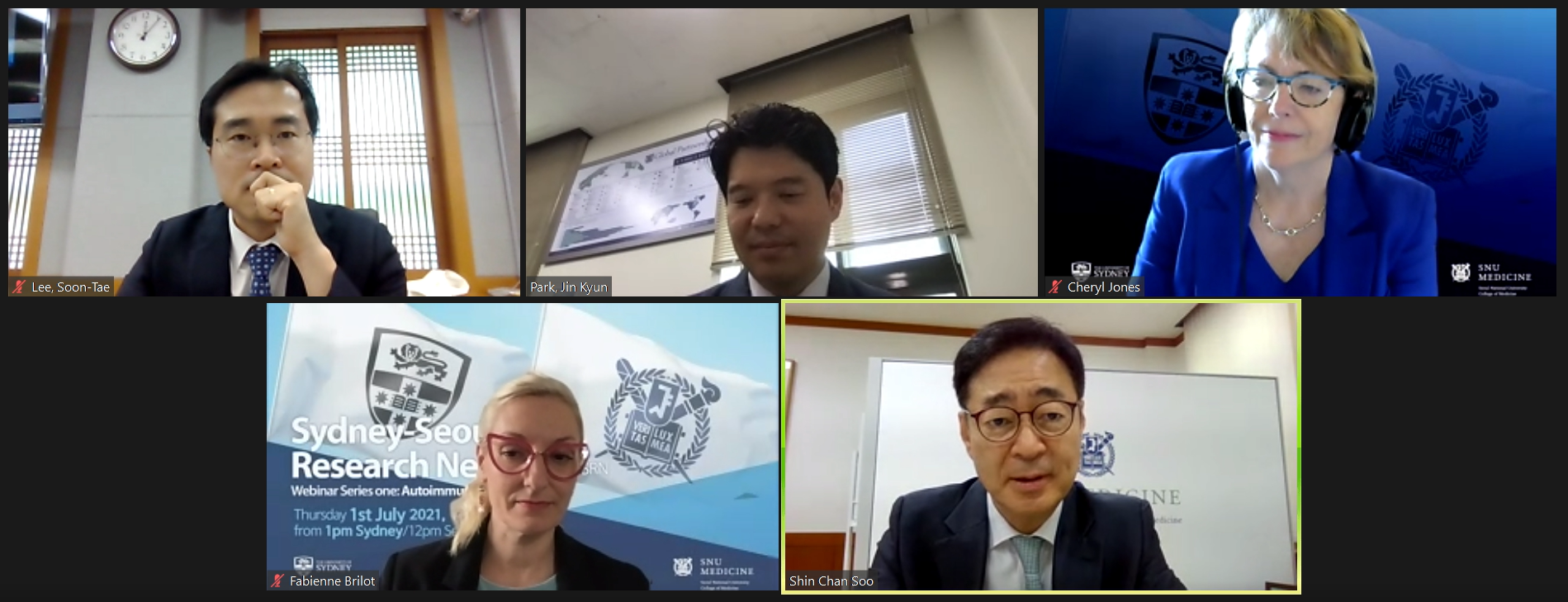
Seoul-Sydney Research Network Webinar Series one : Autoimmune Disease
Opening Ceremony of Korea Dementia Research Center

15th Anniversary Special Forum on Convergence Research between SNU College of Medicine and College of Engineering

MOU-Naver CLOVA CIC
MOU- KIST BSI
Symposium on the Establishment of Department of Medical Device Development
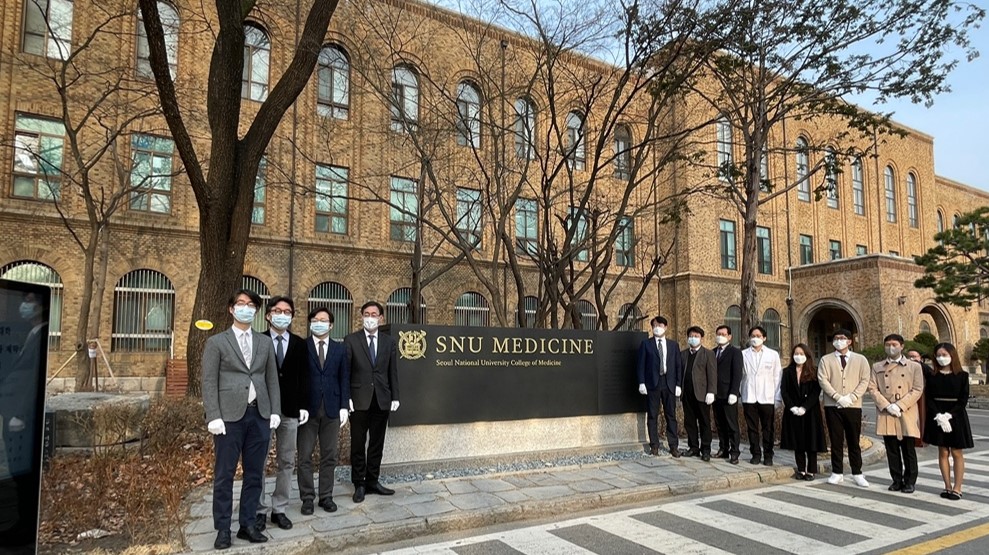
SNUCM symbolic sculpture unveiling ceremony
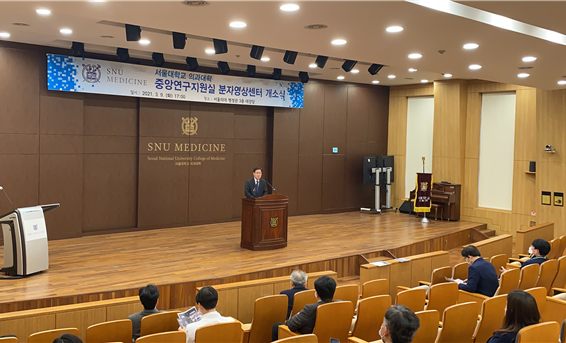
Molecular Imaging Center opening ceremony
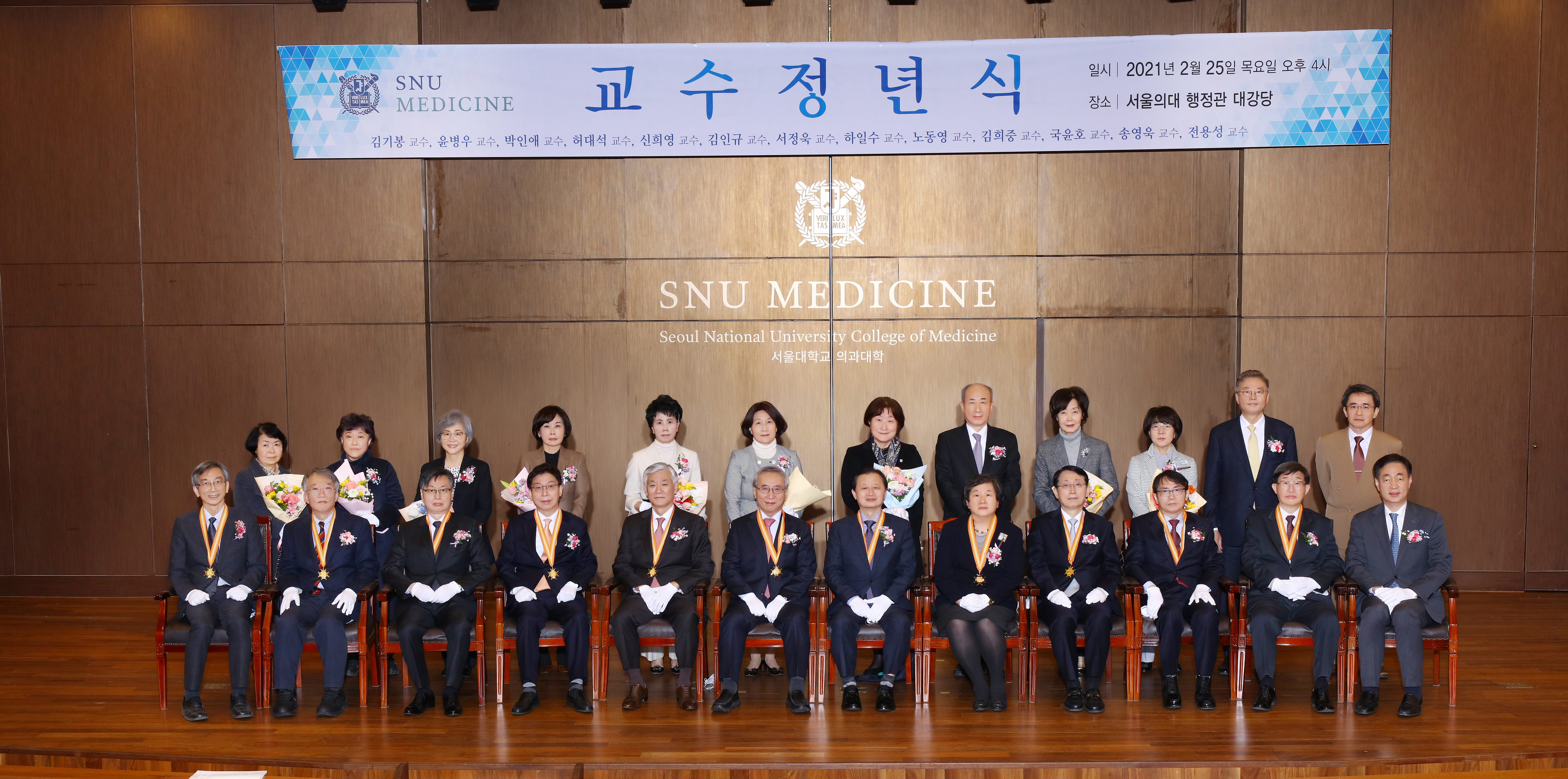
2021 SNUCM Professors Retirement Ceremony(2021-03-08)
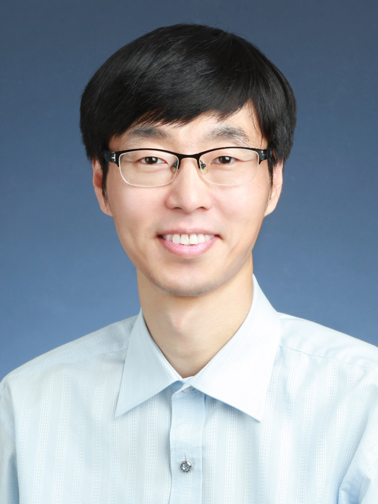
Research of the Month, September, 2024. Genome-wide CRISPR screening identifies tyrosylprotein sulfotransferase-2 as a target for augmenting anti-PD1 efficacy
Genome-wide CRISPR screening identifies tyrosylprotein sulfotransferase-2 as a target for augmenting anti-PD1 efficacy (유튜브 채널 해당 영상으로 이동)

Research of the Month, August, 2024. Blood culture-free ultra-rapid antimicrobial susceptibility testing
Blood culture-free ultra-rapid antimicrobial susceptibility testing (유튜브 채널 해당 영상으로 이동)
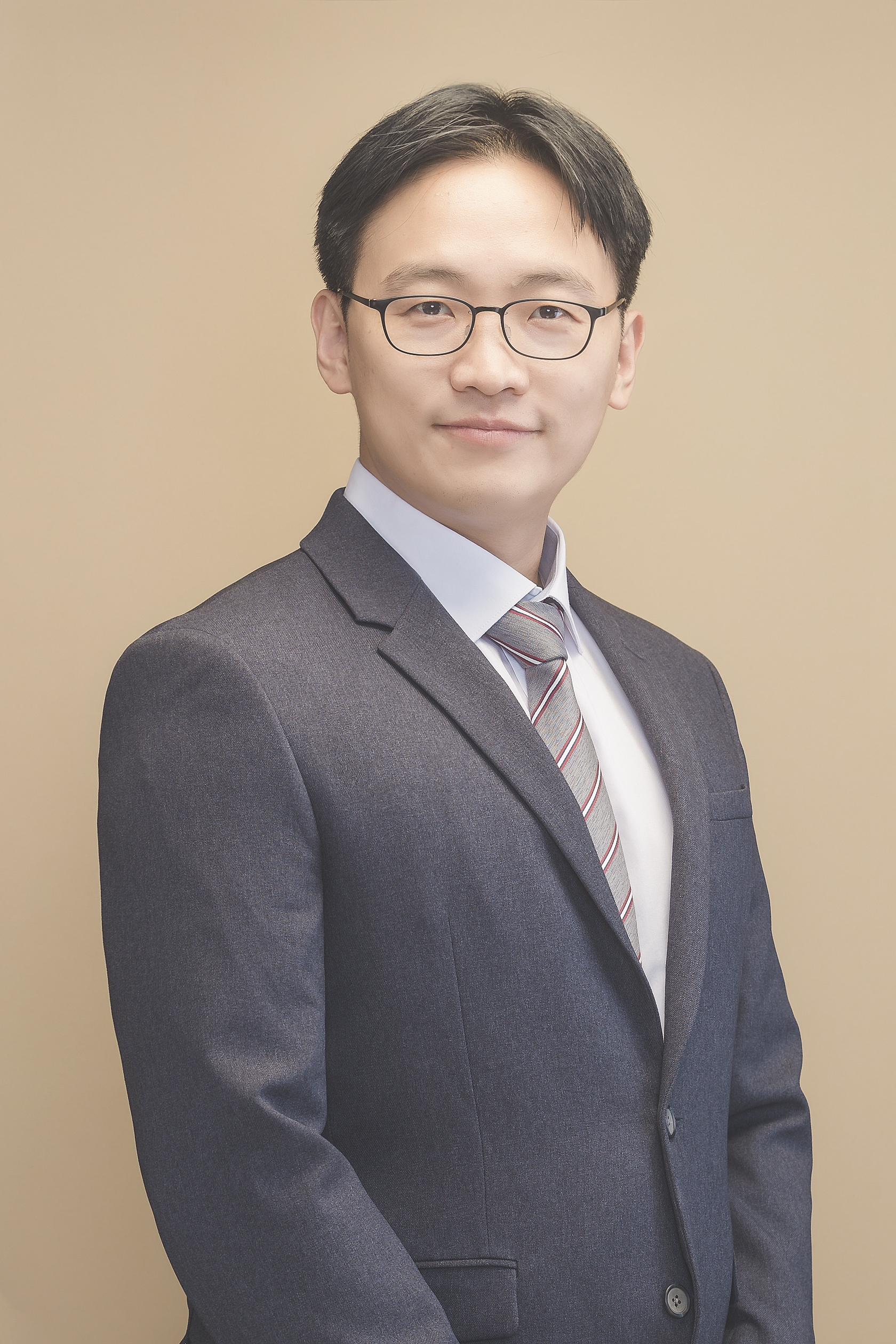
Research of the Month, July, 2024. GLP-1 increases preingestive satiation via hypothalamic circuits in mice and humans
GLP-1 increases preingestive satiation via hypothalamic circuits in mice and humans (유튜브 채널 해당 영상으로 이동)
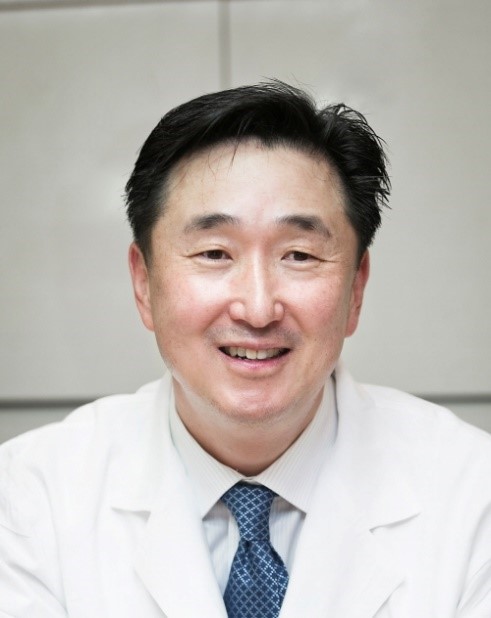
Research of the Month, May, 2024. Criteria for selecting living liver donors to optimize recipient outcomes in pure laparoscopic donor right hepatectomy: a cohort study
Criteria for selecting living liver donors to optimize recipient outcomes in pure laparoscopic donor right hepatectomy: a cohort study (유튜브 채널 해당 영상으로 이동)
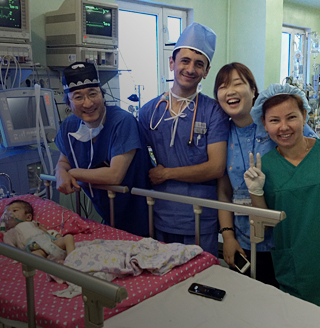
JW LEE Center for Global Medicine
Dedicated to conducting research and capacity building for students and fellows to deliver inclusive services and connect the global community

International Partnership
SNU MEDICINE actively promotes student exchanges and faculty research activities by signing MOUs with overseas Institutions
COVID-19 Updates
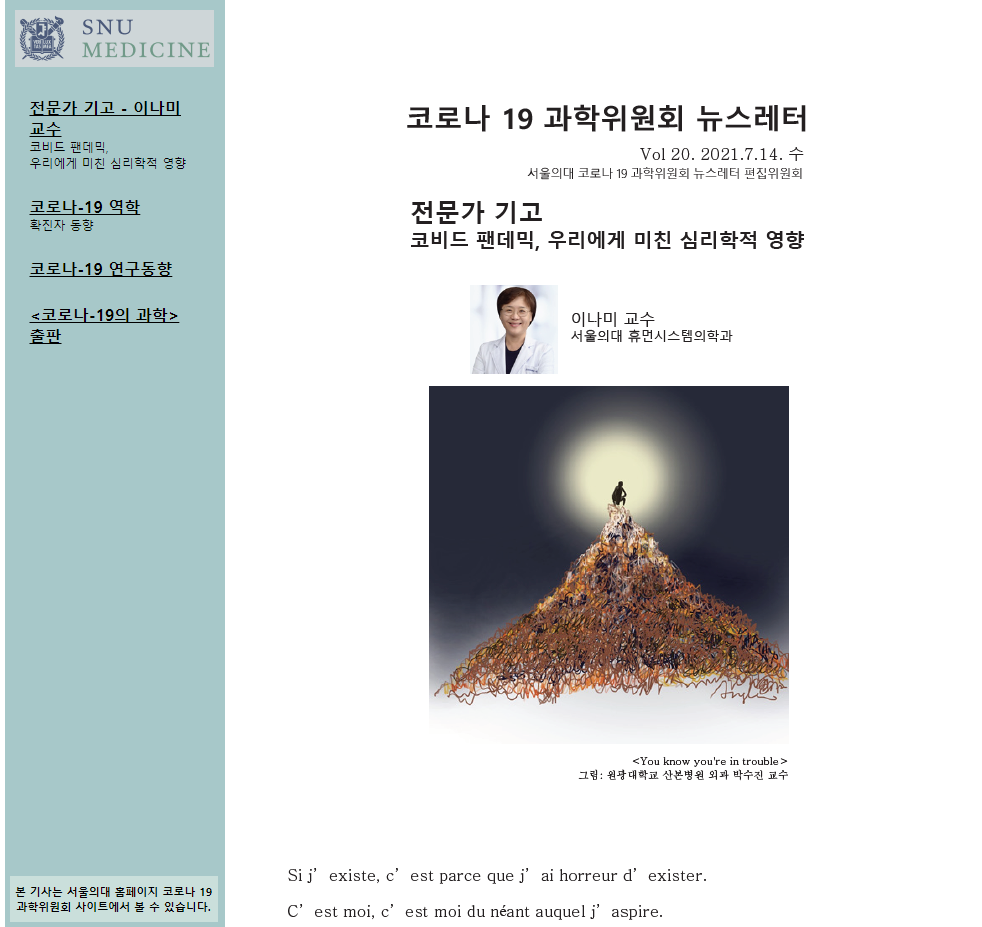
Beyond & Ahead
Reaching Beyond Korea to Become the Leading Medical School in the World
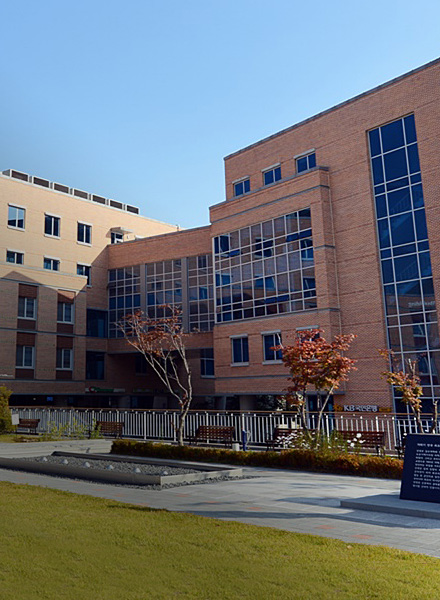
Academic Hall Pioneering Medical Research and Practical intellect

Seoul National University College of Medicine
SNU Medicine Future Development Committee Special Leadership Lecture Series
SNUCM Report

QS(Quacquarelli Symonds) 2021 Seoul National University college of Medicine WORLD RANKING
Korea Ranks
World Ranks
RESEARCH PROFILES More
Research Profile
Research Output
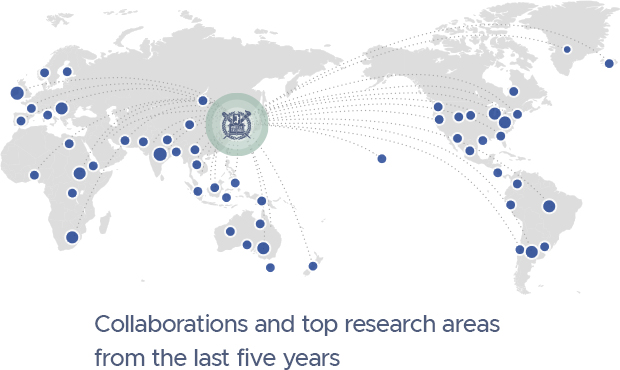
ADDITIONAL LINKS

- Privacy Policy
- Map & Directions
103 Daehak-ro, Jongno-gu Seoul (03080) TEL : 82-2-740-8114
Copyright©2021 Seoul National University College of Medicine All rights reserved.
An official website of the United States government
Official websites use .gov A .gov website belongs to an official government organization in the United States.
Secure .gov websites use HTTPS A lock ( Lock Locked padlock icon ) or https:// means you've safely connected to the .gov website. Share sensitive information only on official, secure websites.
- Publications
- Account settings
- Advanced Search
- Journal List

The Impact and Implications of the Flexner Report on Medical Education in Korea
Hyun bae yoon, sun jung myung.
- Author information
- Article notes
- Copyright and License information
Address for Correspondence: Sun Jung Myung, MD, PhD. Office of Medical Education, Seoul National University College of Medicine, 103 Daehak-ro, Jongno-gu, Seoul 03080, Korea. [email protected]
Corresponding author.
Received 2024 May 14; Accepted 2024 May 16; Collection date 2024 Jun 10.
This is an Open Access article distributed under the terms of the Creative Commons Attribution Non-Commercial License ( https://creativecommons.org/licenses/by-nc/4.0/ ) which permits unrestricted non-commercial use, distribution, and reproduction in any medium, provided the original work is properly cited.
The recent debate surrounding the expansion of enrollment in Korean medical schools has reignited interest in the Flexner Report, published in the United States in 1910. Historically, medical education in the United States transitioned from small proprietary schools to university-affiliated institutions, emphasizing basic science and clinical experience. The Flexner Report advocated for scientific medicine and led to significant reforms in medical education, including standardization of curricula and strengthened admission requirements. The influence of this report extended to Korean medical education, shaping its curriculum, accreditation system, and emphasis on academic excellence. The expansion of medical school enrollment has led to a crucial dilemma. Should we prioritize the training of physicians who provide practical medical services or continue to emphasize academic medicine as we do now? There has been insufficient discussion of the individualized curricula, necessary investments, and societal efforts to accommodate these changes. It is imperative to move beyond mere enrollment expansion debates and collectively determine the future trajectory of Korean medical education, devising actionable plans to achieve overarching goals.
Keywords: Medical Education, Flexner Report
INTRODUCTION
Recently, there has been a controversy in Korea regarding the expansion of medical school enrollment, which has sparked debate among various stakeholders, including policymakers, educators, healthcare professionals, and the public. Many concerns have arisen regarding the quality of medical education, prompting a reexamination of the century-old Flexner Report from the United States. Although the United States is a global leader in medical education today, its current systematic structure was not attained until the early 20th century.
This paper explores the background and key findings of the Flexner Report, analyzing the state of medical education in the United States at the time of the Report’s publication and its subsequent influence. It also assesses the current landscape of medical education in Korea and the relevance of the Flexner Report in this context. Furthermore, we discuss the lessons that the Flexner Report provides regarding the current situation of medical school expansion in Korea, even a century after its publication.
MEDICAL EDUCATION IN THE UNITED STATES UNTIL THE FLEXNER REPORT
When European immigrants first began to establish colonies in the Americas, medicine and medical education were quite different from their current formats. During the colonial era, medical practice was empirical and medical training mainly comprised apprenticeship. During the 18th century, apprentice medical training became more structured and standardized, leading to early proprietary medical schools in the new independent country. 1
After independence, the economic growth of America was surprisingly high, and its population rapidly increased. The growing nation clearly needed more medical practitioners. However, the medical education system in the early 19th century was very different from modern medical education. Many proprietary medical schools were producing more practitioners, but apprenticeship remained a common method for medical training. The curriculum of the proprietary medical schools rarely had order or structure, and the same content was usually repeated every semester for 2 or 3 years. There was no formal assessment during training, nor were there any criteria for admission or graduation. 2 Because all proprietary medical schools heavily depended on student tuition, schools always benefited from enrolling as many students as possible. In such circumstances, it was impossible to raise the standards for admission, education, promotion, and graduation. There also were no strict requirements regarding the practice of medicine. During the 19th century, however, medical schools became increasingly affiliated with larger universities, forming a system closer to modern medical schools. 1 American physicians and scientists who studied medicine or basic science in Europe, especially in Germany, returned to America and became faculty in those university-affiliated medical schools. 3 The drive for educational reform had begun to grow in American medical schools.
At the beginning of the 20th century, there were more than 150 medical schools in America. Some were affiliated with larger universities, such as Harvard and the Universities of Pennsylvania and Michigan. These university-affiliated medical schools pioneered educational reform in the late 19th century. 4 The curriculum became more structured and organized, including basic science in the early phase and clinical medicine in the later phase. The length of the curriculum also increased from 2 years to 3 years, and then to 4 years. Experience performing laboratory experiments was emphasized during the basic medical science curriculum. Criteria for admission or graduation became stricter, and formal assessments were included in the curriculum. These university-affiliated medical schools awarded their graduates an MD degree. 1 Despite the educational reform in these pioneering medical schools, many proprietary schools had experienced minimal change since the previous century. Proprietary schools unaffiliated with a larger university could not afford laboratory facilities or sufficient full-time faculty. They also could not raise their standards for admission and student promotion due to the fear of losing students to competitor schools. The gap between leading university-affiliated medical schools and proprietary schools became larger than at any other time in history. 5
BACKGROUND AND CONTENT OF THE FLEXNER REPORT
The Association of American Medical Colleges (AAMC), established in 1890, led the reform of medical education in the late 19th and early 20th centuries. 5 The AAMC was a strong advocate of academic medicine, including research within medical schools, which was only possible in university-affiliated medical schools. The AAMC also recommended raising the criteria for admission into medical schools. This was possible by the end of the 19th century, mostly because overall basic education in America had considerably improved. 6
The American Medical Association (AMA), founded in 1847, aimed to protect physicians’ rights nationwide, initially focusing on the exclusion of unqualified practitioners and promotion of trained physicians. 7 By the late 19th century, most states required formal medical education for licensure. This was possible due to the growing public trust in scientific medicine during the late 19th and early 20th centuries. Subsequently, this period was called the “Progressive Era” in American history. 5 In 1904, during the “Progressive Era,” the AMA established the Council on Medical Education to evaluate medical schools. After conducting a 2-year investigation, the AMA Council on Medical Education asked the Carnegie Foundation for the Advancement of Teaching to conduct an independent evaluation of medical schools. The Carnegie Foundation appointed Abraham Flexner (1866–1959) to lead the evaluation process, and the Council on Medical Education supported Abraham Flexner during his 2-year investigation (1909–1910). 8
Flexner’s report was originally titled “Medical Education in the United States and Canada.” 9 It had two sections. The first section addressed the ideal principles of general medical education and the practical issues of real-world American medical education. The second section provided details about medical schools in the United States and Canada. Flexner himself adopted two major principles for medical education. 8 He argued that medicine should be and already was “scientific medicine.” Therefore, science (e.g., physics, chemistry, and biology) is—and should be—the basis of modern medicine, and scientific methodology is the core of medical practice. To realize the first principle in medical education, he emphasized the experiential learning of medical students in the laboratory and clinic, which the well-known educationist John Dewey (1859–1952) called “learning by doing.” This educational philosophy and the corresponding movement were later termed “progressive education.” 4
Based on these education principles, Flexner evaluated medical schools using five criteria: admission requirements, number of faculty members, financial support, laboratory facilities, and clinical facilities. 9 The leading university-affiliated medical schools already met these criteria, whereas the smaller proprietary medical schools were the main targets of harsh criticism regarding their educational environments. Flexner strongly argued that all the proprietary medical schools should be closed, except when they were high-quality university-affiliated medical schools.
THE INFLUENCE OF THE FLEXNER REPORT ON MEDICAL EDUCATION IN THE UNITED STATES
The public’s response to publication of the Flexner Report was sensational. 8 Remember, this was the “Progressive Era” when public trust in scientific medicine was stronger than ever. The public could not accept that many schools still did not teach scientific medicine and produce scientific physicians. Most medical educators, many of them in university-affiliated medical schools, also fully supported the report; most of the proprietary medical school staff members were outraged by the harsh criticism they received. However, the drive for further educational reform had become unstoppable and continued to accelerate.
After the Flexner Report, the era of medical philanthropy began. 10 Extensive funding from national foundations, including the General Educational Board, Carnegie Corporation, and Rockefeller Foundation, poured into American medical schools, along with local support and individual donations. From 1902 to 1934, an estimated 154 million dollars were donated to medical schools; this amount was almost equal to half of the total amount supporting higher education during that period. The financial support was crucial for expanding laboratory facilities and recruiting more full-time faculty. However, the support was exclusively directed to university-affiliated medical schools, which made it extremely difficult for proprietary medical schools to survive during educational reform.
As an overall consequence of educational reform, the number of medical schools decreased from 160 at its peak in the early 1900s to 76 by 1930. Conversely, the average number of students in each school almost doubled; the total number of graduates every year remained relatively steady (between 3,500 and 4,500). However, because the total population was increasing, the number of physicians per capita decreased by one third (from 173 to 125 per 100,000 population) during the period. 11
Because most of the smaller proprietary medical schools closed in the early 20th century, it became much more difficult to enter medical school, especially for women, Black individuals, and people with low income. 12 Many of the sectarian medical schools that had accepted women and Black individuals had closed with the other proprietary schools. During the period of educational reform, admission requirements became stricter, and tuition became more expensive due to increasing overall cost of education. Medical professionals themselves became part of the upper class of society. Medical education also sought academic excellence over educational equity or training a sufficient number of physicians to serve the community and public. After the educational reform in the early 20th century, academic medicine based on rigorous research and academic excellence became the gold standard for medical education in the United States for the next 100 years.
HISTORY OF MEDICAL EDUCATION IN KOREA
Before analyzing the impact of the Flexner Report on medical education in Korea, it is important to consider how historical, philosophical, cultural, social, political, and economic contexts have shaped the background of medical education. The history of medical education in Korea spans approximately 100 years since the introduction of western medicine. According to data from the Korean Medical Association, medical education in Korea evolved through several phases: the adoption of western medicine before 1910; the period of Japanese colonial rule from 1910 to 1945; the emulation of American medical education from 1946 to 1960; and the establishment of American-style medical education from 1961 to 1976. During the progression from the 1970s to the 1990s, concepts of educational methodology and evaluation began to be actively introduced; as Korea entered the 2000s, earnest discussions began regarding the identity of Korean medical education. 13 , 14
Japanese-style western medicine was formally introduced to Korea under Japanese colonial rule, but after Korean liberation, the dominant influence on the establishment and implementation of medical education shifted from Japan to the United States.
Unlike the United States, where a student must complete a 4-year degree program to enter medical school, Korea introduced a 6-year program for medical schools. This was due to circumstances similar to the colonial era, when secondary education was not well-established and only a tiny fraction of students progressed to university. The familiarity and preference for the Japanese imperial university model, which includes a 6-year medical education program with 2 years of pre-medical education, overshadowed the unfamiliar American-style medical school model. In the 1990s, it was necessary to restructure the higher education system by categorizing graduate education into general and professional graduate schools, similar to the system in the United States. However, this reorganized medical school system did not persist, and it eventually reverted to the previous academic system. 15 , 16
Rapid economic growth in Korea led to increased demand for healthcare in the 1960s; new medical schools were established, resulting in a total of 41 schools and an annual admission capacity of 3,300 students in the 1990s. A reduction in the admission quota for medical schools in Korea began to be formally discussed during the pharmaceutical division struggle in 2000. After this struggle, in an effort to fulfill the promise to reduce medical school admissions, the Ministries of Health and Welfare and Education agreed to decrease medical school admissions by 10%. This led to a gradual reduction in medical school admissions, totaling 351 places by 2007. Since then, medical school admissions have been maintained at 3,058 places for 18 years. 15
In 2020, the government announced plans to increase medical school admissions and establish public medical schools. However, these plans were postponed due to opposition from the medical community. Nevertheless, the shortage of physicians in some specialties, collapse of essential medical services, and disparities in healthcare across regions have prompted reconsideration of expanding medical school admissions.
INFLUENCE OF THE FLEXNER REPORT ON MEDICAL EDUCATION IN KOREA
Standardized curriculum.
Flexner proposed that a 4-year medical education program would be ideal, consisting of 2 years of basic science and 2 years of clinical training; this format has been largely maintained and continues to serve as the standard curriculum for most medical schools in the present day. The Flexner Report argued that science and medicine are inseparable, and that clinical medicine should be based on a solid foundation of basic science. It also emphasized hospital-based practice and active participation in patient care during clinical education. 1
This approach helped to standardize medical education, but it has been criticized for several reasons. First, there is no integration between basic and clinical medicine. This led to a disconnect when transitioning from basic medical sciences to clinical medicine. There was also criticism that the biomedical model received excessive emphasis, leading to abandonment of patient-centered holistic care. To address these criticisms, integrated basic-clinical education programs have been introduced, along with efforts to strengthen humanities and social medicine education, such as communication skills and ethics. 17
Accreditation evaluation
The Flexner Report served as the foundation for standardized accreditation systems in medical education. It presented criteria for medical school accreditation, laying the groundwork for subsequent medical school accreditation evaluations.
In Korea, the need for medical school accreditation began to be recognized in the 1970s and 1980s, when many medical schools were established, and the quality of medical education became a major concern within the medical community. Although the introduction of accreditation prevented indiscriminate establishment of medical schools, it was not solely driven by this concern. Instead, the introduction of accreditation was part of ongoing efforts to enhance the overall standard of medical education in Korea, influenced by experiences in countries such as the United States, United Kingdom, and Australia with regard to implementing successful accreditation systems. The increased discussion of medical school accreditation by the Council of Deans from 1990 to 1992 was also prompted by concerns about the continued establishment of medical schools. These concerns led to resolutions opposing the establishment of new medical schools, supported by major medical organizations including the Korean Medical Association.
The Accreditation Board for Medical Education in Korea was founded in 1998 as a voluntary organization but gradually gained strong support from the medical community. It successfully evaluated all 41 medical schools from 2000 to 2004. In 2004, it was renamed the Korean Institute of Medical Education and Evaluation (KIMEE) and received government recognition for its accreditation efforts. In 2014, the Ministry of Education officially recognized KIMEE as an Institute for Accreditation of Higher Education Evaluation. Consequently, in the certification conducted by KIMEE, Seonam University School of Medicine was not accredited; it eventually closed in February 2018. 18
Rigorous academism
The Flexner Report proposed the integration of medical research and education, advocating for research-based education to advance medical knowledge. To Flexner, the need for medical schools to produce an appropriate number of doctors for society was secondary. He had chosen the most rigorous academic model, and the direction of medical education in Korea also focused on academic medicine.
After the American-style academic system was introduced and medical education became the responsibility of universities following liberation, Korean medical education also focused on producing elite doctors who prioritize academia. Moreover, medical school professors who studied in the United States during and after the Korean War led the development of medical science and technology by introducing advanced American medicine. 15 , 19
The remarkable progress in healthcare within Korea, driven by academically focused medical education, is undeniable. However, recent issues such as doctor shortages in some specialties, the collapse of essential medical services, and the need to address regional disparities in healthcare delivery have prompted reassessment of the current direction.
REFLECTION ON THE CURRENT STATE OF MEDICAL EDUCATION IN KOREA
Healthcare in a country is influenced and determined by the specific history, culture, economy, and politics of the society in which it is implemented; similarly, the system of physician training and medical education can only be understood within the context of the factors inherent to a particular society.
The question of which type of physician to cultivate, one with a solid theoretical and academic foundation or one immediately able to practice, depends on the effects of factors such as a country’s healthcare system, culture, and educational environment. Medical education in countries such as the United Kingdom, Canada, and Australia, where active medical education research is conducted, focuses on training primary care physicians to support their national healthcare systems. Therefore, early exposure to clinical practice, integration of clinical and basic medical education, and an emphasis on problem-solving abilities and competencies are key characteristics. However, in these countries, medical research and development largely depend on a few elite medical education institutions; specialist training is limited to the extent necessary for their healthcare systems. Under such medical education systems, medical humanities are often limited to communication skills and other practical competencies required for clinical practice. 20 , 21
After the Flexner Report, academic aspects of medical education in the United States were emphasized. Despite subsequent remarkable socioeconomic advances by American physicians, the emphasis on elite medical education led to a shortage of primary care physicians in local communities by disrupting the tradition of secondary-level physicians that existed in Europe. 21
The medical education system in the United States has a professional school system targeting university graduates; within this system, there has been a consistent emphasis on specialized medical education. The question of whether to cultivate elite physicians who prioritize academia or primary care physicians capable of practical work is a fundamental dilemma in medical education, greatly influenced by each country’s healthcare system.
Although Korea claims that medical schools produce primary care physicians, the actual roles of primary care physicians within the healthcare system are limited. As a result, basic medical education often becomes merely a preparatory stage for subsequent training. Even after they have received such training, most physicians subsequently practice in unrelated fields. 22 When discussing the expansion of medical school admissions, a key question must be addressed: “What kind of physicians should we cultivate?” It is essential to redefine the direction of medical education to cultivate the physicians that society truly needs and to address the phenomenon of medical school admissions frenzy prevalent in Korean society.
The proposal to increase admissions by more than 60% of the total capacity is unprecedented. An improperly planned and inadequately prepared expansion of medical school admissions may lead us back to an era of confusion, similar to a century ago. Moreover, it remains uncertain whether increasing the number of physicians who provide care to patients in each region will effectively address the many issues we face, whether the concentration of healthcare resources in metropolitan areas will be alleviated, and whether the increased amount of healthcare will satisfy the heightened expectations of the populace.
Over the century since the introduction of western medicine, medical education in Korea has made remarkable progress, which is commendable. The issue of expanding medical school admissions cannot be separated from the quality and extensive history of medical education accreditation. When enrollment exponentially increases in a short period, maintaining the quality of medical education, as history has demonstrated, is not an easy task.
The 1910 Flexner Report had a profound impact on medical education in the United States and beyond, including Korea. The report’s emphasis on higher admission and graduation standards, as well as its advocacy for a more science- and research-based approach to medical education, led to extensive reforms in the field. A standardized medical curriculum, accreditation bodies, and academic medicine in Korea are products of the Flexner Report.
The recent conflict over expanding medical school admissions highlights concerns about the quantity and quality of medical education, who is qualified to become a doctor, and how they should be educated. The challenges of expanding medical school enrollment require careful consideration. However, there is a lack of thorough discussion among the government, medical community, and public regarding the justification for expanding medical school admissions and the necessary investments and efforts. It is imperative to move beyond debates solely focused on increasing admissions and engage in comprehensive discussions about the future direction of medical education. These discussions require building consensus and devising concrete action plans and support measures to achieve these goals.
Disclosure: The authors have no potential conflicts of interest to disclose.
- Conceptualization: Yoon HB, Myung SJ.
- Investigation: Yoon HB, Myung SJ.
- Project administration: Myung SJ.
- Writing - original draft: Yoon HB, Myung SJ.
- Writing - review & editing: Yoon HB, Myung SJ.
- 1. Hwang SI. Reform of the medical education in the early 20th century America and the Flexner Report of 1910. Uisahak. 1994;3(1):1–19. [ PubMed ] [ Google Scholar ]
- 2. Ludmerer KM. Learning to Heal. Baltimore, MD, USA: The Johns Hopkins University Press; 1985. American medical education in the mid-nineteenth century; pp. 9–28. [ Google Scholar ]
- 3. Ludmerer KM. Learning to Heal. Baltimore, MD, USA: The Johns Hopkins University Press; 1985. Origin of reform; pp. 29–46. [ Google Scholar ]
- 4. Ludmerer KM. Learning to Heal. Baltimore, MD, USA: The Johns Hopkins University Press; 1985. The innovative period; pp. 47–71. [ Google Scholar ]
- 5. Ludmerer KM. Learning to Heal. Baltimore, MD, USA: The Johns Hopkins University Press; 1985. The spread of educational reform; pp. 72–101. [ Google Scholar ]
- 6. Ludmerer KM. Learning to Heal. Baltimore, MD, USA: The Johns Hopkins University Press; 1985. The shaping of the modern medical school; pp. 102–122. [ Google Scholar ]
- 7. King LS. Medicine in the USA: historical vignettes. IV. The founding of the American Medical Association. JAMA. 1982;248(14):1749–1752. [ PubMed ] [ Google Scholar ]
- 8. Ludmerer KM. Learning to Heal. Baltimore, MD, USA: The Johns Hopkins University Press; 1985. The Flexner Report; pp. 166–190. [ Google Scholar ]
- 9. Flexner A. Medical Education in the United States and Canada. Boston, MA, USA: The Merrymount Press; 1910. [ Google Scholar ]
- 10. Ludmerer KM. Learning to Heal. Baltimore, MD, USA: The Johns Hopkins University Press; 1985. The era of medical philanthropy. [ Google Scholar ]
- 11. Rothstein WG. American Medical Schools and the Practice of Medicine. Oxford, UK: Oxford University Press; 1987. [ Google Scholar ]
- 12. Ludmerer KM. Time to Heal. Oxford, UK: Oxford University Press; 1999. Undergraduate medical education; pp. 59–78. [ Google Scholar ]
- 13. Research Team for Korean Medicine. Medicine in Korea. Seoul, Korea: Hanwool; 1992. [ Google Scholar ]
- 14. Ahn D. Historical perception of Korean medical education. Korean J Med Educ. 2011;23(2):79–81. doi: 10.3946/kjme.2011.23.2.79. [ DOI ] [ PMC free article ] [ PubMed ] [ Google Scholar ]
- 15. Ahn DS, Han HJ. History and future of the Korean medical education system. Korean Med Educ Rev. 2018;20(2):65–71. [ Google Scholar ]
- 16. Yeh BI. How can we improve premedical education in Korea? Korean Med Educ Rev. 2017;19(3):121–128. [ Google Scholar ]
- 17. Yeh CC, Lu KS, Chen HL, Chiu YC. Experiential learning integrating humanities into preclinical medicine. Med Educ. 2023;57(8):779. doi: 10.1111/medu.15110. [ DOI ] [ PubMed ] [ Google Scholar ]
- 18. Meng K. The history and implications of the medical education accreditation system in Korea: implementation and activities in early stages. Korean Med Educ Rev. 2020;22(1):1–8. doi: 10.3352/jeehp.2020.17.29. [ DOI ] [ PMC free article ] [ PubMed ] [ Google Scholar ]
- 19. Kim OJ, Hwang SI. The Minnesota Project: the influence of American medicine on the development of medical education and medical research in post-war Korea. Uisahak. 2000;9(1):112–122. [ PubMed ] [ Google Scholar ]
- 20. Cassedy JH. 3. History of medicine and related sciences in Europe. Notes on teaching and study. Bull Hist Med. 1969;43(3):270–283. [ PubMed ] [ Google Scholar ]
- 21. Kwon I. The value of medical humanities in medical education: focusing on the history of medicine. Uisahak. 2022;31(3):495–517. doi: 10.13081/kjmh.2022.31.495. [ DOI ] [ PMC free article ] [ PubMed ] [ Google Scholar ]
- 22. Yun JM, Choi S, Cho S, Park SM, Kim Y. Definition and status of funtional primary clinic in Korea. Korean J Fam Pract. 2021;11(1):3–9. [ Google Scholar ]
- View on publisher site
- PDF (1.0 MB)
- Collections
Similar articles
Cited by other articles, links to ncbi databases.
- Download .nbib .nbib
- Format: AMA APA MLA NLM
Add to Collections

- phone_in_talk
- Study Destinations
- Universities
- Scholarships
- person Sign Up person Log in -->
- Study Abroad
Application Process
- STUDY ABROAD
- STUDY IN SOUTH KOREA
Medical Courses in South Korea
Check and Apply for the Medical Courses in South Korea ....

Standyou Team
Dec 18, 2023 09:15:39
Top Medical Courses in South Korea for International Students
1. medical degree programs (md).
Language Barrier: The biggest challenge for international students is the language requirement. Most MD programs are taught in Korean, and proficiency in Korean (often TOPIK level 4 or higher) is essential.
Top Medical Schools: Prestigious institutions like Seoul National University (SNU), Yonsei University, and Korea University offer renowned medical programs.
Admission Requirements: These include high school diploma, undergraduate degree in a relevant field (for graduate entry), language proficiency, and passing the Medical Education Eligibility Test (similar to the MCAT).
2. Biomedical Sciences
English-Taught Programs: For those interested in the medical field but facing language barriers, biomedical science programs are a viable alternative. These programs are more likely to be offered in English.
Research and Development Focus: These programs often focus on research, biotechnology, pharmaceuticals, and other healthcare-related areas.
Universities: Institutions like KAIST , POSTECH , and Sungkyunkwan University offer well-respected programs in these areas.
3. Public Health and Healthcare Management
Programs Available: Master’s and PhD programs in public health, healthcare management, and related fields are often available in English.
Scope: These programs focus on the broader aspects of healthcare, including policy, management, epidemiology, and global health.
Universities: Seoul National University , Yonsei University , and Korea University are among those offering these programs.
4. Nursing and Allied Health Programs
English-Taught Programs: Some universities offer nursing and allied health courses in English, though they are less common.
Scope: These include degrees in nursing, physical therapy, occupational therapy, and other allied health professions.
Application Process for International Students
Undergraduate Programs: High school diploma, language proficiency, entrance exams, and sometimes interviews or additional tests.
Graduate Programs: Bachelor’s degree, language proficiency (TOEFL/IELTS for English-taught programs, TOPIK for Korean-taught programs), letters of recommendation, statement of purpose, and sometimes GRE or GMAT scores.
Scholarships and Funding
Korean Government Scholarship Program (KGSP): Offers full scholarships for international students, including tuition, living expenses, and language courses.
University Scholarships: Many universities offer their scholarships for international students.
Best Courses in South Korea for International Students Master Courses in South Korea Engineering Courses in South Korea Medical Courses in South Korea Fashion Designing Course in South Korea Cheap and Affordable Universities in South Korea
Medical Universities in South Korea for International Students
Top medical universities in south korea.
Seoul National University (SNU) College of Medicine
Programs: Known for its excellent medical program, but primarily taught in Korean.
Opportunities for International Students: Research, exchange programs, and postgraduate courses in related fields might be available in English.
Yonsei University College of Medicine
Programs: Offers one of the leading medical programs in South Korea.
International Opportunities: Yonsei has various programs for international students, though direct medical study might require Korean proficiency.
Korea University College of Medicine
Programs: Known for its strong emphasis on research and clinical skills.
International Student Accessibility: They offer some programs in English, primarily at the graduate level.
Sungkyunkwan University (SKKU) School of Medicine
Programs: Renowned for its medical education and research facilities.
English-Taught Programs: Offers programs in biomedical fields and may have some courses in English.
Kyungpook National University School of Medicine
Programs: Offers comprehensive medical education, with a strong research focus.
International Student Options: Mainly in research and related medical fields.
Hanyang University College of Medicine
Programs: Known for its innovation in medical education and research.
Opportunities for Non-Korean Speakers: Includes courses and programs in English in related fields.
Other Considerations for International Students
Language Proficiency: For programs taught in Korean, proficiency in the language (TOPIK Level 4 or higher) is often required. Some universities offer intensive Korean language courses for international students.
Graduate Studies and Research: Opportunities are more abundant at the graduate level, with various programs offering courses in English, especially in fields like public health, biomedical sciences, and healthcare management.
Entrance Requirements: These vary but generally include a strong academic record, language proficiency, and for medical programs, an undergraduate degree in a related field.
Scholarships: Options like the Korean Government Scholarship Program (KGSP) are available for international students, covering tuition and living expenses.
Cost of Studying in South Korea for Indian Students English taught Universities in South Korea IT & Computer Science Courses in South Korea Travel & Tourism Courses in South Korea Universities in Seoul for International Students
Best Medical Universities in South Korea
1. Seoul National University (SNU) College of Medicine : SNU is consistently ranked as one of the top universities in South Korea, and its College of Medicine is highly regarded for its rigorous curriculum, research opportunities, and state-of-the-art facilities.
2. Yonsei University College of Medicine : Known for its comprehensive medical program and innovative research, Yonsei is one of the oldest and most prestigious universities in South Korea. It has a strong focus on global health and offers international collaborations.
3. Korea University College of Medicine : This institution is recognized for its high-quality education and research in medical fields. Korea University also emphasizes practical skills and clinical experience, providing students with hands-on training in their affiliated hospitals.
4. Sungkyunkwan University (SKKU) School of Medicine : SKKU, especially known for its partnership with Samsung Medical Center, offers excellent medical education and research opportunities. It is particularly renowned for advancements in medical technology and biomedical research.
5. Kyung Hee University College of Medicine : This university is well-known for its strong programs in both Western and traditional Korean medicine. Kyung Hee University is also recognized for its research contributions and modern medical facilities.
6. Hanyang University College of Medicine : Hanyang is known for its innovative approach to medical education and research, with strong emphasis on practical skills and clinical experience.
7. Pusan National University School of Medicine : Located in Busan, this university is notable for its research output and comprehensive medical education, with a strong focus on community health.
8. Catholic University of Korea College of Medicine : This institution is well-regarded for its medical education, research, and healthcare services, with a focus on holistic care and ethical considerations in medicine.
9. Ajou University School of Medicine : Ajou University is known for its strong international collaborations and research-focused medical education, particularly in areas like biomedical sciences.
10. Ewha Womans University School of Medicine : As one of the leading women's universities globally, Ewha offers a unique perspective in medical education and research, with a commitment to women's health and gender-specific medicine.
Masters in AI & Data Science Course in South Korea Aerospace Engineering in South Korea Animation Colleges in South Korea Architecture Colleges in South Korea

Scholarship to Study Medical in South Korea
1. korean government scholarship program (kgsp) / global korea scholarship (gks).
Offered By: The Korean Government
Coverage: Tuition, living allowance, airfare, language courses, and more.
Eligibility: International students pursuing undergraduate, master’s, or doctoral degrees in South Korea. Specific eligibility criteria may vary.
Application: Typically through the Korean embassy in your country or directly to the participating Korean university.
2. University Specific Scholarships
Many South Korean universities offer their scholarships for international students. These can vary significantly in terms of coverage and eligibility. Some notable universities with medical programs offering scholarships include:
Seoul National University (SNU)
Yonsei University
Korea University
Sungkyunkwan University (SKKU)
Hanyang University
3. Private and Corporate Scholarships
Several private organizations and corporations in South Korea offer scholarships, some of which are open to students pursuing medical studies. These scholarships might have specific eligibility criteria, such as field of study, nationality, or academic excellence.
4. Research Scholarships
For those interested in medical research, there are scholarships available specifically for research programs, including PhD and research-oriented master’s degrees. These are often provided by the universities themselves or by research institutions.
5. Scholarships for Language and Cultural Studies
If you need to improve your Korean language skills before commencing medical studies, there are scholarships available for language and cultural programs, which can serve as a stepping stone to a medical degree in Korea.
Application Tips
Research Thoroughly: Each scholarship has its own application process and eligibility criteria. Make sure to research each option thoroughly.
Early Application: Start the application process early, as gathering documents and meeting requirements can take time.
Language Proficiency: Proficiency in Korean might be necessary for medical programs, so consider scholarships that include language courses.
Contact Universities: Reach out to the international students office of the universities you are interested in for detailed information about available scholarships and financial aid.
Hospitality and Hotel Management Course in South Korea Electrical Engineering Courses in South Korea Marketing Courses in South Korea for Bachelors and Masters Students Diploma Courses in South Korea
Bachelor in Medical Courses in South Korea
Structure of medical education in south korea.
1. Undergraduate-Postgraduate System: Unlike some countries where medical education starts right after high school, in South Korea, it usually follows an undergraduate-postgraduate model. Students first complete a Bachelor’s degree (usually a 4-year course) and then proceed to a 4-year medical program (equivalent to a Doctor of Medicine, MD).
2. Bachelor’s Degree: The initial undergraduate phase can be in a field related to medicine, like Biomedical Science, Biology, or even non-science fields.
3. Medical School Admission: Admission to the medical program (MD) is highly competitive and requires excellent grades in the undergraduate course, high scores on the Medical Education Eligibility Test (MEET), and proficiency in the Korean language.
Bachelor Programs Related to Medicine
For international students, directly enrolling in a Bachelor’s program in medicine might not be feasible due to language and system differences. However, you can consider related undergraduate programs:
Biomedical Sciences
Public Health
Life Sciences
These programs are more likely to be available in English and can be a stepping stone towards a medical career or postgraduate medical studies.
Top Universities Offering Related Programs
Korea Advanced Institute of Science and Technology (KAIST)
Language Requirements
Korean Proficiency: For programs taught in Korean, proficiency in the language is crucial. This is especially true for clinical and medical programs.
English-Taught Programs: Some universities offer science-related courses in English, which might be more accessible for international students.
Admission Requirements
High School Diploma: With good grades, particularly in science subjects.
Language Proficiency: TOPIK for Korean-taught programs; TOEFL or IELTS for English-taught programs.
Standardized Tests: SAT or ACT scores might be required.
Additional Requirements: Essays, letters of recommendation, interviews, and extracurricular achievements can also be important.
Media and Mass Communication Courses in South Korea Marketing Courses in South Korea Mechanical Engineering Course in South Korea Civil Engineering Courses in South Korea
Master in Medical Courses in South Korea
Types of master's programs available.
1. Biomedical Sciences: Focused on research in biological and medical sciences, including areas like molecular biology, genetics, and biochemistry.
2. Public Health: Covering aspects like epidemiology, health policy, global health, and healthcare management.
3. Healthcare Management/Administration: Concentrating on the management and administration aspects of healthcare systems.
4. Medical Engineering or Biotechnology: Bridging the gap between engineering, technology, and medicine.
5. Nursing and Healthcare Informatics: Advanced studies in nursing or the application of informatics in healthcare settings.
Top Universities Offering English-Taught Programs
1. Seoul National University (SNU): Offers various graduate programs in public health, biomedical sciences, and healthcare management.
2. Yonsei University: Known for its strong programs in public health, nursing, and biomedical sciences.
3. Korea Advanced Institute of Science and Technology (KAIST): Offers specialized programs in medical science and engineering, focusing on research and innovation.
4. Korea University: Provides various graduate options in health sciences and biomedical fields.
5. Sungkyunkwan University (SKKU): Known for its advanced research in biomedical and health sciences.
6. Hanyang University: Offers programs in biomedical engineering and healthcare management.
General Admission Requirements
1. Bachelor’s Degree: In a relevant field from an accredited institution.
2. Language Proficiency: For English-taught programs, TOEFL or IELTS scores are usually required. For Korean-taught programs, proficiency in Korean (TOPIK) is necessary.
3. Academic Records: Transcripts, letters of recommendation, and a statement of purpose.
4. Research Proposal: Especially for research-focused programs, a well-developed research proposal may be required.
5. Work Experience: Beneficial for certain programs, particularly in healthcare management or administration.
Korean Government Scholarship Program (KGSP): Provides tuition, living expenses, and language courses.
University Specific Scholarships: Many universities offer scholarships for international students, which may cover tuition fees, living expenses, or both.
DBA (Doctor of Business Administration) in South Korea BPharm (Bachelor of Pharmacy) in South Korea BDS (Bachelor of Dental Surgery) in South Korea
PhD in Medical Courses in South Korea
Types of phd programs.
1. Biomedical Sciences: Involving in-depth research in areas like molecular biology, genetics, biochemistry, and cell biology.
2. Clinical Research: Focused on the study of clinical trials, drug development, and patient-centered research.
3. Public Health: Covering epidemiology, health policy, global health issues, and preventive medicine.
4. Medical Engineering/Biotechnology: Bridging advanced engineering and technology with medical applications.
5. Healthcare Management and Policy: For those interested in the administrative, policy-making, and management aspects of healthcare.
Top Universities for PhD Programs
1. Seoul National University (SNU): Known for its rigorous research programs in various medical and health science fields.
2. Yonsei University: Offers a wide range of research opportunities, particularly in biomedical sciences and public health.
3. Korea Advanced Institute of Science and Technology (KAIST): Renowned for its innovative research in medical engineering and biotechnology.
4. Korea University: Strong in clinical research and public health studies.
5. Sungkyunkwan University (SKKU): Notable for research in biomedical sciences and partnerships with leading medical institutions.
6. Hanyang University: Offers robust programs in medical engineering and healthcare management.
1. Master’s Degree: Usually in a relevant field, although some programs may accept outstanding candidates directly from a bachelor’s degree.
2. Research Proposal: A comprehensive proposal outlining your intended research area.
3. Academic Transcripts and Recommendations: From previous university studies.
4. Language Proficiency: For English-taught programs, a TOEFL or IELTS score is required. Korean proficiency (TOPIK) is necessary for Korean-taught programs.
5. Interviews: Some programs may require interviews, either in person or online.
Funding and Scholarships
Korean Government Scholarship Program (KGSP): Provides comprehensive support including tuition fees, living expenses, and language courses.
University-Specific Scholarships: Many universities offer scholarships and research grants for PhD students.
Research Assistantships: Often available, providing hands-on experience while supporting studies.
Contact Potential Supervisors: It’s crucial to establish contact with potential supervisors before applying.
Customize Your Application: Tailor your application to highlight how your research interests align with the university’s expertise.
Plan for Language Requirements: Consider taking language courses if your program requires proficiency in Korean.
Top Universitys in South Korea
Eligibility Criteria for Medical Course Program in South Korea
For undergraduate medical programs (pre-medical courses).
High School Graduation: Completion of high school or equivalent secondary education.
Academic Performance: Strong academic record, especially in science subjects.
Language Proficiency:
For Korean-taught programs: High level of Korean proficiency, usually demonstrated by a TOPIK (Test of Proficiency in Korean) score.
For English-taught programs: TOEFL, IELTS, or equivalent test scores.
Entrance Exams: Some universities require SAT, ACT, or equivalent exams.
Interviews: May be part of the selection process.
For Professional Medical Programs (MD)
Bachelor’s Degree: Typically, a 4-year Bachelor’s degree, preferably in a science-related field.
Pre-Medical Coursework: Completion of pre-medical requirements, which may include courses in biology, chemistry, physics, and mathematics.
Entrance Exams: Korean Medical Education Eligibility Test (MEE) or equivalent.
Language Proficiency: High level of Korean proficiency is essential for programs taught in Korean.
Academic Performance: Strong undergraduate GPA and a good score on the relevant entrance exam.
Interviews and Additional Assessments: Personal interviews, essays, and other assessments may be required.
For Graduate Programs (Master’s and PhD)
Bachelor’s/Master’s Degree: A relevant undergraduate degree for Master’s programs, and a Master's degree for PhD programs.
Research Proposal: Particularly for PhD applicants, a well-formulated research proposal aligned with the university’s research areas.
Academic Performance: Strong academic record in previous university-level studies.
For Korean-taught programs: TOPIK score.
For English-taught programs: TOEFL, IELTS, or equivalent.
Letters of Recommendation: Usually required from academic referees.
Work Experience: May be considered, especially for programs like healthcare management.
Intakes & Application Deadlines for Medical Courses in South Korea
General intake periods.
Spring Intake
Application Period: Typically occurs around September to November in the year preceding the start of the program.
Start of Semester: Usually begins in March.
Fall Intake
Application Period: Commonly runs from May to June in the same year the semester begins.
Start of Semester: Generally starts in Septembe.
Specifics for Medical Courses
1. Undergraduate Pre-Medical or Biomedical Programs: Follow the general university intake periods. However, exact dates can vary, and it’s essential to check each university’s schedule.
2. Professional Medical Programs (MD): These programs can have more specific and sometimes more restrictive application periods. Admissions for MD programs are highly competitive and may require additional entrance examinations or assessments.
3. Graduate Programs (Master’s and PhD): While generally aligning with the university’s intake periods, some graduate programs, especially research-focused ones, might have more flexible application dates.
1. Research and Preparation: Start by researching universities and specific programs to understand their requirements and deadlines.
2. Documentation: Gather necessary documents, including academic transcripts, proof of language proficiency, letters of recommendation, and personal statements.
3. Entrance Exams and Language Tests: Schedule and prepare for any required exams (e.g., TOPIK for Korean language proficiency, GRE, GMAT, or specific medical school entrance tests).
4. Application Submission: Apply either directly to the university or through their designated application platforms before the deadline.
5. Follow-up: Some programs might require interviews or additional assessments.
Tips for International Students
1. Early Preparation: Start the application process well in advance. This is especially important for gathering documents and meeting language requirements.
2. Scholarships and Funding: If you’re applying for scholarships, be aware that their application deadlines may differ from the program application deadlines.
3. Visa Application: Leave ample time for the student visa application process once you receive an admission offer.
MBBS (Bachelor of Medicine and Bachelor of Surgery) in South Korea MDS (Master of Dental Surgery) in South Korea MPharm (Master of Pharmacy) in South Korea
Fees for Medical Courses in South Korea
Undergraduate programs (pre-medical or biomedical sciences).
Public Universities: Tuition fees at public universities are generally more affordable, ranging from about 3,000 to 5,000 USD per year.
Private Universities: Fees at private institutions can be higher, averaging around 6,000 to 12,000 USD per year.
Professional Medical Programs (MD)
Public Universities: Tuition for the MD program in public universities can range from approximately 4,000 to 7,000 USD per year.
Private Universities: These programs can be more expensive in private universities, with fees potentially ranging from 10,000 to 20,000 USD per year or more.
Graduate Programs (Master’s and PhD)
Public Universities: Graduate program fees in public universities usually range from 3,000 to 6,000 USD per year.
Private Universities: The fees can range from 5,000 to 15,000 USD per year, depending on the program and university.
Additional Expenses
Living Costs: Living expenses in South Korea can vary widely depending on lifestyle and location. On average, an international student might need about 700 to 1,500 USD per month for accommodation, food, transportation, and other personal expenses.
Insurance, Books, and Supplies: These can add to the overall cost. Health insurance is mandatory for international students in South Korea.
Language Courses: If you need to take Korean language courses, this will be an additional cost to consider.

Please Enable Javascript to View This Page.
Want to skip Verification for now ? Click here
Book your Profile Evaluation to Study Abroad in Public Universities
Get a guaranteed scholarship of minimum 20% to study abroad.
An official website of the United States government
Official websites use .gov A .gov website belongs to an official government organization in the United States.
Secure .gov websites use HTTPS A lock ( Lock Locked padlock icon ) or https:// means you've safely connected to the .gov website. Share sensitive information only on official, secure websites.
- Publications
- Account settings
- Advanced Search
- Journal List
A proposal for the future of medical education accreditation in Korea
Ki-young lim.
- Author information
- Article notes
- Copyright and License information
Corresponding email: [email protected]
This is a secondary publication of an article published in the Korean Medical Education Review 2020;22(1):28-31, https://doi.org/10.17496/kmer.2020.22.1.28 , with the approval of the editor (Woo Taek Jeon) and the author. The articles are identical. Either citation can be used when citing this article.
Received 2020 Oct 19; Accepted 2020 Oct 20; Collection date 2020.
This is an open-access article distributed under the terms of the Creative Commons Attribution License ( http://creativecommons.org/licenses/by/4.0/ ), which permits unrestricted use, distribution, and reproduction in any medium, provided the original work is properly cited.
For the past 20 years, the medical education accreditation program of the Korean Institute of Medical Education and Evaluation (KIMEE) has contributed significantly to the standardization and improvement of the quality of basic medical education in Korea. It should now contribute to establishing and promoting the future of medical education. The Accreditation Standards of KIMEE 2019 (ASK2019) have been adopted since 2019, with the goal of achieving world-class medical education by applying a learner-centered curriculum using a continuum framework for the 3 phases of formal medical education: basic medical education, postgraduate medical education, and continuing professional development. ASK2019 will also be able to promote medical education that meets community needs and employs systematic assessments throughout the education process. These are important changes that can be used to gauge the future of the medical education accreditation system. Furthermore, globalization, inter-professional education, health systems science, and regular self-assessment systems are emerging as essential topics for the future of medical education. It is time for the medical education accreditation system in Korea to observe and adopt new trends in global medical education.
Keywords: Accreditation, Graduate medical education, Medical education, Republic of Korea, Self-assessment
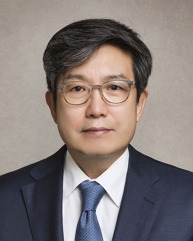
Introduction
Twenty years have passed since the 1st basic medical education accreditation project was launched for the medical education system in Korea. For the past 20 years, this accreditation system has prevented the indiscriminate establishment of medical schools and has enabled the structural standardization of educational resources and the curriculum, including medical facilities and teaching personnel. This system has also made countless contributions to the advancement of Korean medical education, including the introduction of an innovative curriculum, the establishment of humanities and social medicine education, and the spread of performance-based education and student-centered education. The present study aimed to suggest directions that the Korean medical education accreditation project, which has entered into its adulthood at the age of 20 years, should pursue in the future.
Beginning of Korea’s medical education accreditation system
Medical school accreditation was first discussed in Korea in 1990, in an article titled “Need for medical school assessment system” which was published in the second volume of the Korean Journal of Medical Education . Professor Yoo Bok Lee of the Yonsei University College of Medicine argued persuasively for the need to introduce an accreditation system as the best way to ensure the quality of medical education [ 1 ]. The background of these claims was the sudden and unilateral turmoil introduced by new medical schools. He articulated this point as follows:
Since medical education has the longest history and tradition in the field of higher education in our country, it has been a matter of pride to advance and improve medical education in many ways. However, it is true that in the past 20 years, the quantitative expansion of medical education institutions and the rapid increase in the number of students have instead caused the deterioration of education. Therefore, the biggest task facing medical education in Korea is the structural improvement of medical education institutions and curricula. ... However, although steps for the structural standardization of medical education institutions have been discussed, this work has not yet begun. We believe that we should improve medical education institutions’ quality not by placing blame on new medical education institutions for being structurally inadequate; instead, we should compel them to take improvement measures. ... Although there are official regulations for establishing a university in Korea, these usually are minimum standards. Furthermore, there is no official regulation that accounts for the specific characteristics of medical schools.
However, no concrete steps were immediately made by the medical community to launch an accreditation project for medical schools in response to that article. Meanwhile, the Korea University Education Council, which had been conducting university-level evaluations, decided to conduct evaluations of specific academic fields. In 1996, the Korea University Education Council conducted evaluations of health-related universities, including medical schools, which led to severe concerns and complaints among the medical education community. Specifically, because of their lack of medical education expertise, some coercive evaluators focused mainly on external appearances such as facilities and equipment.
Furthermore, the evaluators tried to rank schools according to their assessment scores to present certain medical schools to the public as exemplars of excellence. At the end of his presidential term, President Kim Young-Sam’s civilian government advocated establishing several medical schools by implementing “approval first, facilities later” policies for establishing medical schools. Adherence to the principles of regional equilibrium in development and regulatory reform supported these policies. As the situation unfolded, the medical school certification project by autonomous organizations became an urgent issue that could no longer be postponed [ 2 ].
As a result, at the end of 1997, the Professional Committee for Accrediting New Medical Schools was formed. Research and development of the concepts and definition of medical education accreditation, including its definition, objectives, areas, standards, cycles, and procedures, were conducted. Finally, the Accreditation Board for Medical Education of Korea (ABMEK) was established in July 1998. In 1999, the ABMEK conducted preliminary accreditation for 8 new medical schools. The accreditation standards and systems were verified through this trial, and a full-scale medical education accreditation project began in 2000.
Development of accreditation project
The ABMEK was reorganized into the Korean Institute of Medical Education and Evaluation (KIMEE) in 2003. The medical education accreditation projects from 2000 have been the 1st cycle (2000–2005), the 2nd cycle (2007–2010), the post-2nd cycle (2012–2018), and the current Accreditation Standards of the KIMEE 2019 (ASK2019, 2019–present) [ 3 ].
In the 1st cycle of accreditation, an emphasis was placed on preventing disruptions in new medical schools and achieving structural standardization of medical schools. In other words, the focus was on securing the minimum educational conditions and curriculum to fulfill the social accountability of nurturing doctors. Quantitative standards such as lecture rooms, laboratories, clinical training hospitals, basic educational facilities, materials for education, staffing of basic and clinical professors, and the curriculum’s basic composition were the most important criteria.
In the 2nd cycle of accreditation, which started in 2007, the goal was to go a step further and to develop medical education in Korea to reach international standards. Excellent standards were established in addition to existing mandatory and recommended standards. To this end, the KIMEE has benchmarked the accreditation standards, methods, and procedures of experienced countries such as the United States, the United Kingdom, and Australia, while reducing the number of quantitative criteria and significantly increasing the number of qualitative criteria for judging the validity of the content of medical education.
In the post-2nd cycle of the accreditation, which started in 2012, numerous quantitative criteria were changed to qualitative criteria. Each medical school was recommended to adopt a performance-based curriculum. Furthermore, by eliminating the cycle concept, each medical school’s self-assessment became a routine and regular activity. A particular emphasis was placed on character education, student safety, and ensuring personal rights. The Higher Education Act and the Medical Service Act were revised to adopt mandatory accreditation as a result of the ongoing efforts of the KIMEE at this time. As a result, accreditation became mandatory in the medical field, and a legal basis was established to close non-accredited universities. The KIMEE gained practical power, and finally, a medical school that failed accreditation multiple times was closed and an insolvent medical school was succeeded by other competent operating bodies.
In September 2016, the KIMEE was recognized as an accreditation agency representing Korea by the World Federation of Medical Education (WFME). ASK2019, which was modified to ensure that medical education accreditation standards were suitable for Korea’s present situation, was developed and applied starting in 2019. ASK2019 was designed to upgrade the medical education in Korea to the international level by emphasizing a learner-centered curriculum and integrating the 3 stages of education (basic medical education, graduate medical education, and continuing professional education). It also reflected the medical needs of society as a whole. The changed standards pursued by ASK2019 are indicators that will be used to assess the accreditation of medical schools in Korea in the future.
The future of medical education accreditation in Korea
The accreditation project of the KIMEE has made outstanding contributions to medical education in Korea in the past 20 years. By setting minimum standards for the establishment and operation of medical schools, the proliferation of an excessive number of new medical schools was prevented. Furthermore, non-accredited schools were closed or handed over to other competent bodies. The accreditation standards of the KIMEE promoted the adoption of innovative curricula such as integrated education, performance-based education, and problem-based learning. It created a desirable environment for medical students to study and develop their skills through appropriate curricula. The concepts of medical humanities and social medicine were established according to KIMEE’s standards. Pursuing the excellence of basic medical education and responding well to globalization have been achievements of the KIMEE-led accreditation program. Professor George Miller said that “assessment drives learning,” but it is possible to say that “accreditation drives medical colleges” in Korea.
What should the accreditation of medical education look like in the future? In what direction should the future of medical education accreditation in Korea progress? In order to discuss future medical school accreditation projects, it is necessary to determine what medical education should look like in the future and what directions it should pursue. Topics often mentioned in discussions of the future of medical education include globalization, interprofessional education, health systems science, and the concept of a continuum of medical education. Harden [ 4 ] emphasized the globalization of medical education in a paper published in 2006. He predicted that medical education in the future will be forced to move in the direction of globalization due to the following facilitating factors: (1) The health care system is gradually globalizing. (2) Governments are under increasingly strong pressure to nurture medical personnel due to international competitiveness and societal demands. (3) International communication and exchange related to medical education are becoming more active than ever.
An international consensus on the philosophy and methods of medical education is being established, and many countries have adopted performance-based education systems. Therefore, it is necessary for future accreditation standards to verify whether appropriate education is being administered to train physicians who can act globally. In 2017, experts in medical education accreditation from Korea, Japan, and Taiwan argued that future medical school accreditation should be conducted following the concept of glocalization [ 5 ]. In other words, standards such as those of the WFME, Liaison Committee on Medical Education, and General Medical Council should be used as the basic framework. However, they should be modified and applied according to each country’s situation. Consideration should be given to dividing the accreditation system into separate systems: one based on local standards and the other based on global standards.
Along with globalization, inter-professional education is an essential factor in the future of medical education. Physicians, nurses, and many other health professionals will need to work together as a team. Starting in basic medical education courses, providing education on interprofessional communication will improve health professionals’ understanding of each other’s work, motivate teamwork, and foster cooperation skills. Future accreditation standards should therefore include such inter-professional education as an essential element. It is necessary to actively consider the participation of experts in other occupations such as nursing, dentistry, and pharmacy as medical education accreditation evaluators.
Health systems science, which has recently become the third domain of medicine, following basic medicine and clinical medicine, should also be emphasized. This field includes several areas such as professionalism, communication, leadership, value-based medicine, and patient safety. Humanities and social medicine were included as essential criteria in past accreditation cycles. It is also necessary to make health system science education an essential part of medical education accreditation in the future [ 6 ].
Future accreditation should ensure that the entire process of medical education―from basic medical education to postgraduate medical education and continuing professional education―can be conducted as an uninterrupted continuum. Currently, medical education accreditation is limited to basic medical education. The accreditation of postgraduate education and continuing education is currently operated without any communication with the KIMEE. This reality in Korea underscores the importance of the continuity and connection of all stages of medical education. According to international trends, we should integrate this segmented accreditation system, so that the boundary between basic medical education and postgraduate medical education will gradually be blurred [ 7 ]. Lastly, changes in the institutions being assessed are more important than changes in the accreditation body. The primary purpose of accreditation is not merely to check medical schools every few years to determine whether medical education programs meet the appropriate standards. Instead, it is necessary to ensure that medical education is the most important responsibility of medical schools. It is crucial that the operating personnel of medical schools—professors, students, and staff—participate in self-assessments to continue improving.
Medical education accreditation should play a role in establishing and driving medical education in Korea, as it has done so far. It is crucial to look ahead to the directions in which medical education should move forward and to establish future directions of accreditation. The most crucial point is to perceive and respond proactively to new medical education trends worldwide, such as the globalization of medical education, the strengthening of inter-professional education, the emergence of health systems science, and the strengthening of continuity across education levels.
Acknowledgments
Authors’ contributions
KYL did all the work.
Conflict of interest
The author declares that there is no conflict of interest.
Data availability
Supplementary materials
Supplement 1. The audio recording of the abstract.
- 1. Lee YB. Need for medical school assessment system. Korean J Med Educ. 1990;2:1–2. doi: 10.3946/kjme.1990.2.1.1. [ DOI ] [ Google Scholar ]
- 2. Accreditation Board of Medical Education in Korea . Report on the comprehensive review of the first cycle medical college accreditation. Seoul: Korean Institute of Medical Education and Evaluation; 2006. [ Google Scholar ]
- 3. Korean Institute of Medical Education and Evaluation 20 Years of footsteps of KIMEE. Proceedings of the Symposium on the 20th Anniversary of Medical Education Accreditation: Past, Present, and Future of KIMEE (Brochure); 2019 Nov 8; Seoul, Korea. Seoul. 2019. [ Google Scholar ]
- 4. Harden RM. International medical education and future directions: a global perspective. Acad Med. 2006;81(12 Suppl):S22–S29. doi: 10.1097/01.ACM.0000243411.19573.58. [ DOI ] [ PubMed ] [ Google Scholar ]
- 5. Ho MJ, Abbas J, Ahn D, Lai CW, Nara N, Shaw K. The “glocalization” of medical school accreditation: case studies from Taiwan, South Korea, and Japan. Acad Med. 2017;92:1715–1722. doi: 10.1097/ACM.0000000000001999. [ DOI ] [ PubMed ] [ Google Scholar ]
- 6. Gonzalo JD, Dekhtyar M, Starr SR, Borkan J, Brunett P, Fancher T, Green J, Grethlein SJ, Lai C, Lawson L, Monrad S, O'Sullivan P, Schwartz MD, Skochelak S. Health systems science curricula in undergraduate medical education: identifying and defining a potential curricular framework. Acad Med. 2017;92:123–131. doi: 10.1097/ACM.0000000000001177. [ DOI ] [ PubMed ] [ Google Scholar ]
- 7. Sklar DP. Creating a medical education continuum with competencies and entrustable professional activities. Acad Med. 2019;94:1257–1260. doi: 10.1097/ACM.0000000000002805. [ DOI ] [ PubMed ] [ Google Scholar ]
Associated Data
This section collects any data citations, data availability statements, or supplementary materials included in this article.
Supplementary Materials
- View on publisher site
- PDF (567.4 KB)
- Collections
Similar articles
Cited by other articles, links to ncbi databases.
- Download .nbib .nbib
- Format: AMA APA MLA NLM
Add to Collections

IMAGES
VIDEO
COMMENTS
The Bachelor of Medicine, Bachelor of Surgery (의학사) degree is awarded after completion of six years. Medical students must pass the Korean National Medical Licensing Examination to obtain a medical licence. Universities also offer academic, research-oriented degrees including Master of Medicine (의학석사) and Doctor of Philosophy in ...
The Dongje Medical School (1904-1907), the first modern TRM educational institute of Korea, was established by Emperor Gojong as a last attempt to maintain public TRM education; however, it was terminated along with his forced resignation and TRM education and medical service were performed only in the private sector for 100 years. 17 After ...
Korean Journal of Medical Education. ORIGINAL RESEARCH2024 August 29 The effectiveness of competency-based global health education programs for medical students. Purpose: This study aimed to develop a competency-based global health education (GHE) program for medical students and analyze its effectiveness.
The quality of medical education is assured by the Korean Institute of Medical Education and Evaluation (KIMEE). After obtaining a license to practice as a doctor, almost all new doctors start further training to be a medical specialist. To apply for the qualification test for medical specialists, a one-year internship and four-year residency ...
The 76th graduation ceremony of Seoul National University College of Medicine. GSDS-SNUCM Agreement Ceremony on Bachelor's & Master's degree joint course. 2021 Webinar for Medical Education during Covid-19 in East Asia. SNUCM Professors Retirement Ceremony in August 2021. Seoul-Sydney Research Network Webinar Series one : Autoimmune Disease.
The Accreditation Board for Medical Education in Korea was founded in 1998 as a voluntary organization but gradually gained strong support from the medical community. It successfully evaluated all 41 medical schools from 2000 to 2004. In 2004, it was renamed the Korean Institute of Medical Education and Evaluation (KIMEE) and received ...
Structure of Medical Education in South Korea. 1. Undergraduate-Postgraduate System: Unlike some countries where medical education starts right after high school, in South Korea, it usually follows an undergraduate-postgraduate model. Students first complete a Bachelor's degree (usually a 4-year course) and then proceed to a 4-year medical ...
As a result, the Accreditation Board for Medical Education in Korea (ABMEK) was founded in 1998 as a voluntary organization by the medical community. With full support of the Korean medical community, ABMEK completed its 1st cycle of evaluations of all 41 medical schools from 2000 to 2004. In 2004, ABMEK changed its name to the Korean Institute ...
The first 2 years of medical studies in Korea is called 'pre-medical,' which differs significantly from all the European medical education systems. Most of Europe's medical education is 5 or 6 years long and does not have this division of pre-medical and medical studies; medical studies start from the very first year. During these first 2 ...
Beginning of Korea's medical education accreditation system. Medical school accreditation was first discussed in Korea in 1990, in an article titled "Need for medical school assessment system" which was published in the second volume of the Korean Journal of Medical Education.Professor Yoo Bok Lee of the Yonsei University College of Medicine argued persuasively for the need to introduce ...